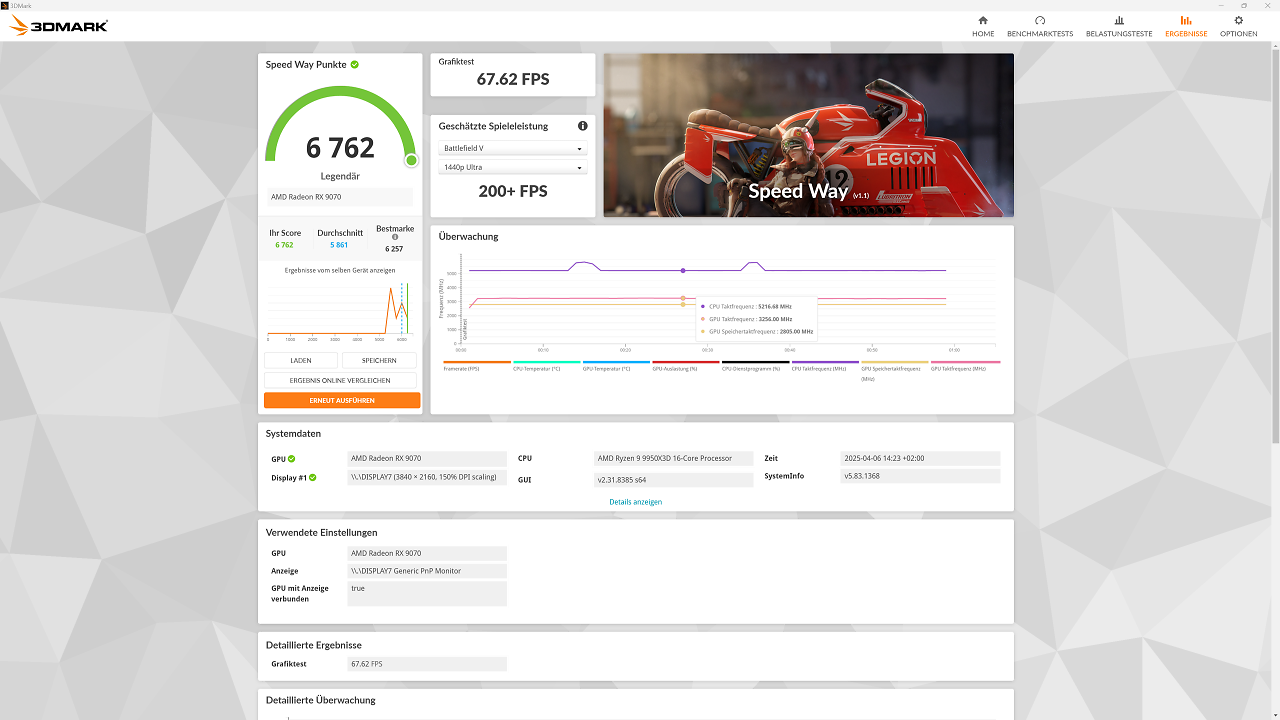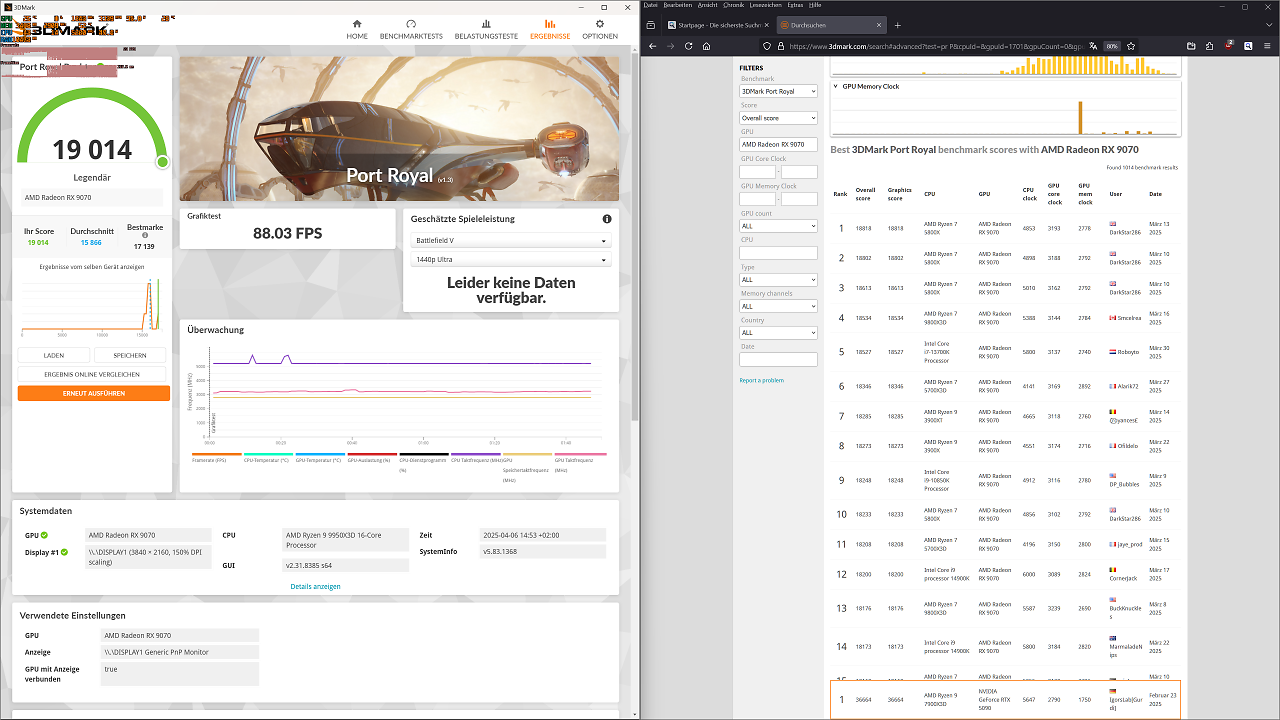
Within just a month, the PC enthusiast community has already flashed the base RX 9070 with the XT's vBIOS, as reported by PCGH. In this instance, the increased TGP and clock speeds net a solid 15-20% uplift over the base configuration, and with some tuning, the RX 9070 can approach or even surpass its XT equivalent. While this is a fun experiment with tangible benefits, remember that modding your GPU's vBIOS will likely void any warranty and carries a number of risks, like bricking your GPU.
As shown in the benchmarks below, the base RX 9070 is quite power-starved, limited to a 220W TGP compared to the 304W TGP design on its XT brethren. The clock speeds also take a significant hit, dropping from 2.97 GHz (reference) to 2.52 GHz (reference). A member of the PCGH community successfully flashed his Asus Prime RX 9070 with the vBIOS of the Asus Prime RX 9070 XT, clearing the power and frequency blockade. This effectively bumped the power draw to 317W, with the boost clocks up in the 3.1 GHz range.




Across the 3DMark suite, the modded RX 9070 coupled with the Ryzen 9 9950X3D consistently achieves 15-20% higher performance than similar non-modded configurations. In addition, with some overclocking and tuning, it is reported that the user managed to beat a stock RX 9070 XT. As might be expected, some minor instabilities were observed. AMD's ULPS (Ultra Low Power State) not working was one such issue.
Both Nvidia and AMD have tightened restrictions on vBIOS modifications in recent years. Such modding is especially tricky with Nvidia's hardware, owing to a vBIOS signature check that started with the Maxwell generation, primarily to prevent fraud and scams.
With previous AMD GPU generations like Vega and RDNA 1, the firm used the same underlying chip for its top two GPUs, differentiating them mainly through disabled hardware shaders and software-locked clock speeds. Much of the same saga repeats with RDNA 4, and the mere $50 price difference makes the RX 9070 seem like an obvious upselling tactic for the RX 9070 XT.
The software aspect of earlier gen limitations could be overcome by flashing the vBIOS, allowing many Vega 56 cards to perform like Vega 64s, while bringing RX 5700 performance up to RX 5700 XT levels. However, since the missing shaders are likely fused off on the hardware level, they cannot be re-enabled through software.
If you decide to take your GPU for a spin, be aware of the obvious dangers of vBIOS modding. Likewise, keep an eye on your core, memory, and VRM temperatures as you'd be pushing over 300W across a board that's likely not designed with that figure in mind.







